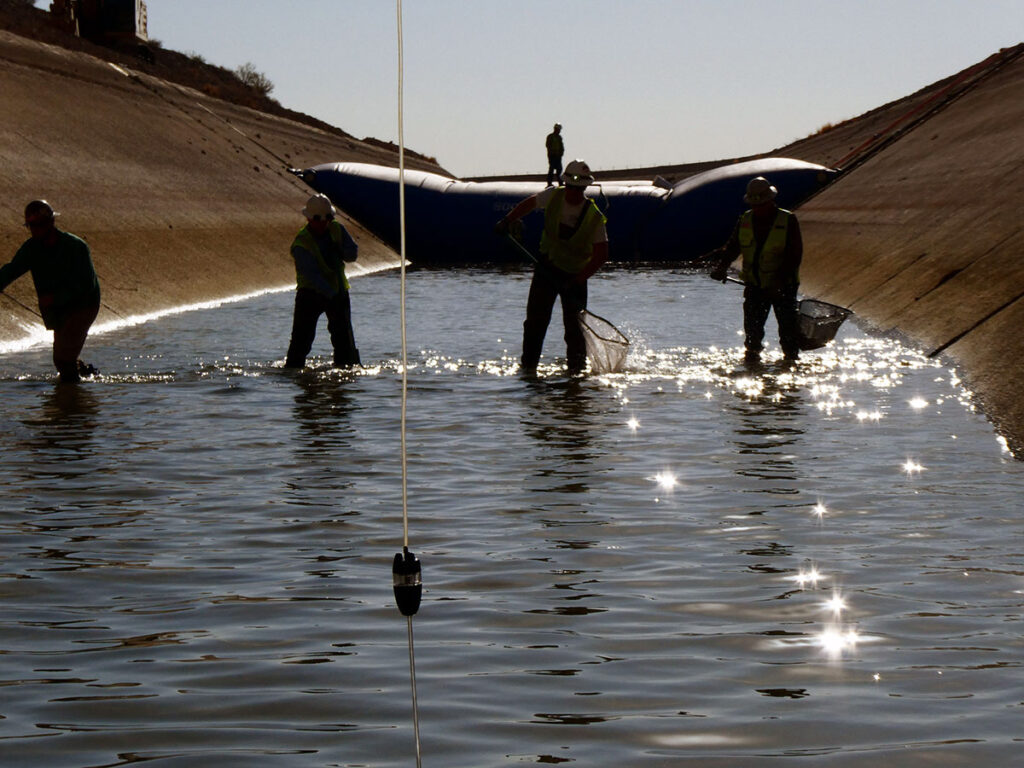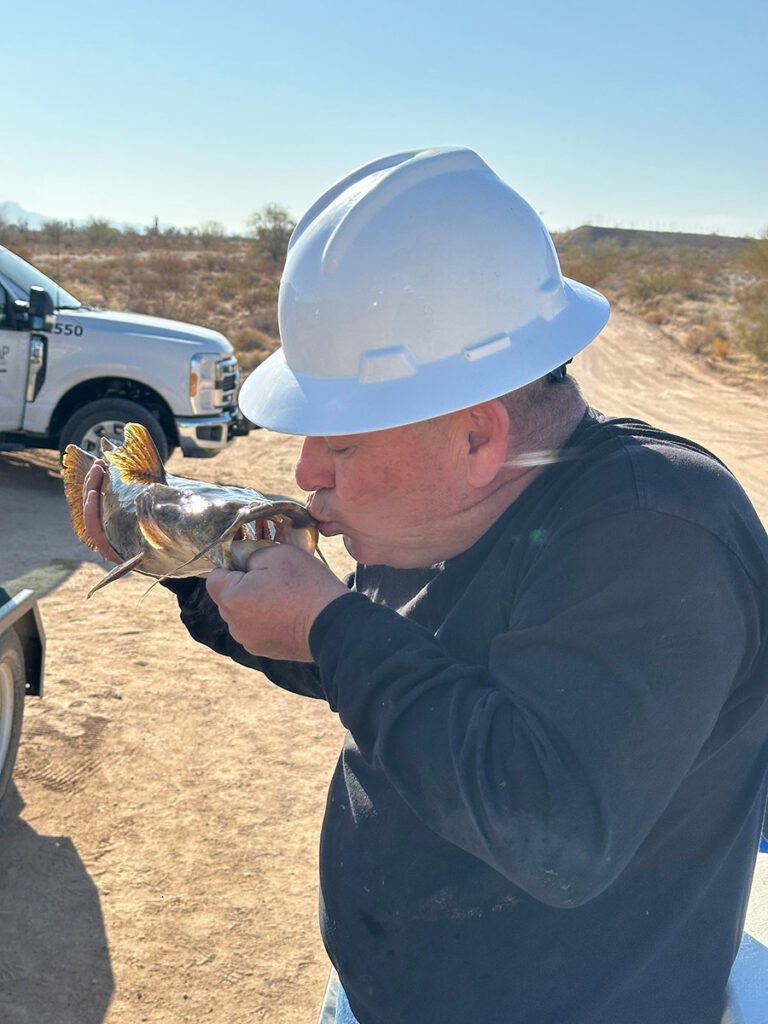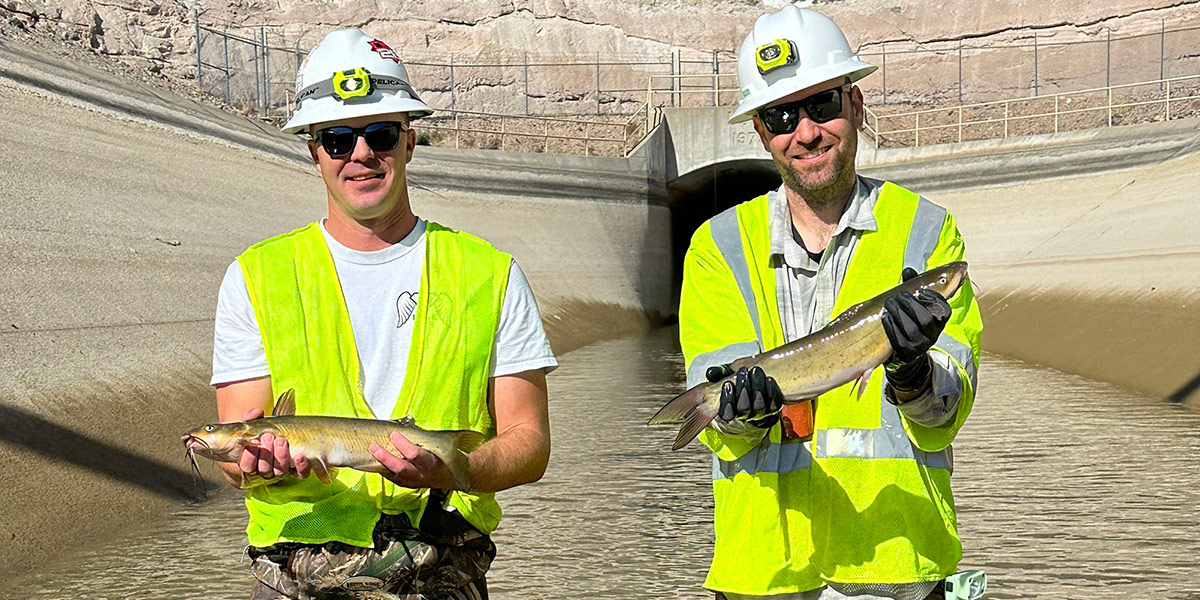By Scott Bryan, water quality and biology administrator
Due to relatively high flows, a lack of cover and habitat, and sparse food resources, the CAP canal is not an ideal location for fish from the Colorado River to thrive. Despite this, fish populations in the canal persist at a reasonably high rate. Sportfish species, like largemouth and smallmouth bass, bluegill, redear sunfish, and striped bass enter as eggs or larvae at Lake Havasu and Lake Pleasant, grow into adults, and can be found throughout the system. Common carp, also from our source waters, do very well and grass carp and channel catfish are stocked annually for vegetation and insect control.
So, what happens to the fish when we drain sections of the canal for maintenance work?
Typically, fish detect the movement of equipment and people and move out of busy work areas. However, sometimes fish are trapped within the work area and if all of the water is removed, or if the water is extremely low for a long period of time, these fish perish.
To avoid this, CAP crews from various departments unite and rescue those fish. It’s the right thing to do, but there are also other reasons:
- It is a requirement of the Operating Agreement between Central Arizona Water Conservation District (CAWCD) and the Bureau of Reclamation.
- The fish stocked for vegetation and insect control represent a relatively large expense to CAP and have a job to do.
- Safety first! If they aren’t removed, the fish – dead or alive — can pose a danger to employees for a variety of reasons, such as creating slipping and tripping hazards, emitting toxic compounds, attracting flies and other nuisance insects, and potentially attracting aggressive wildlife.
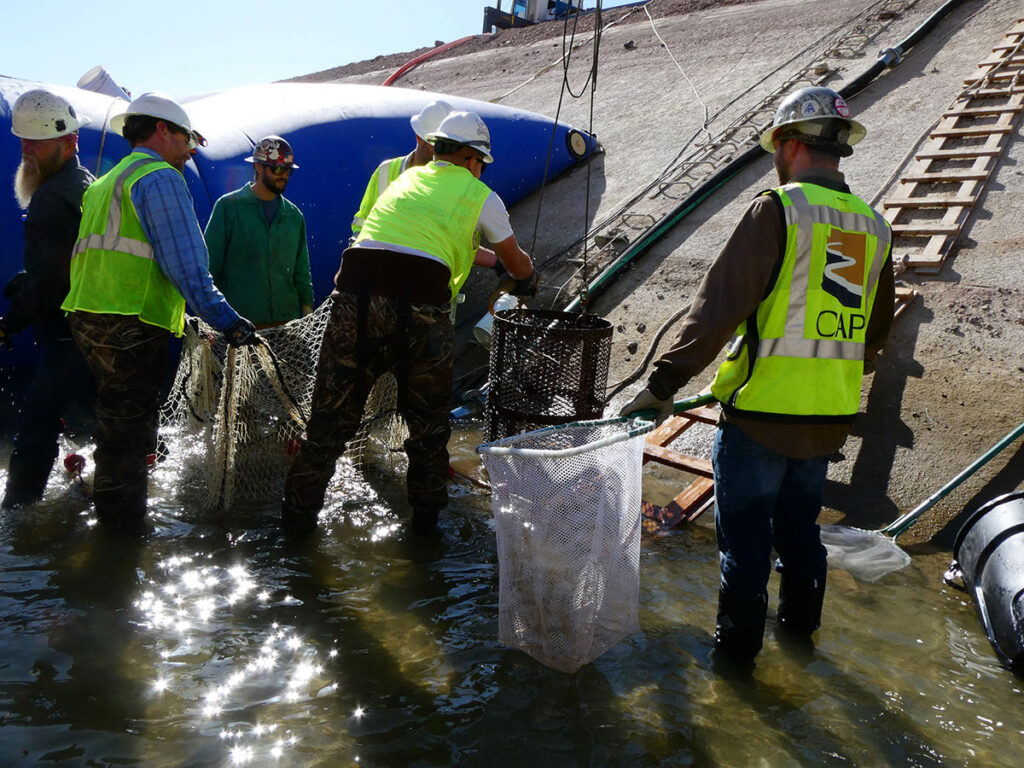
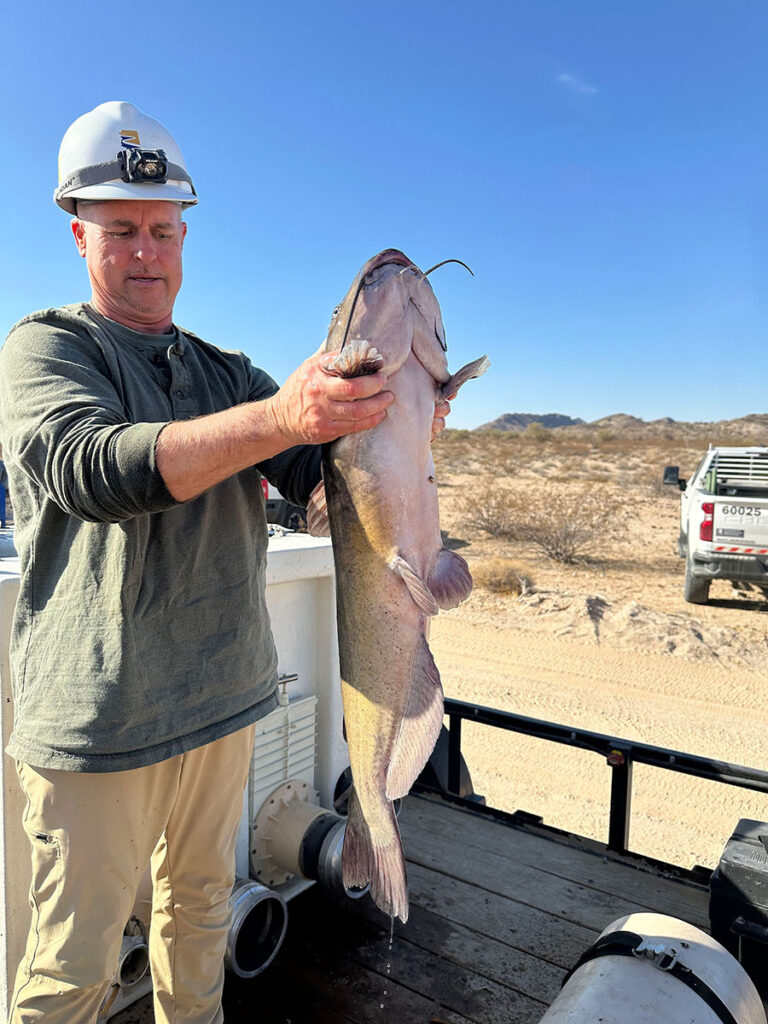
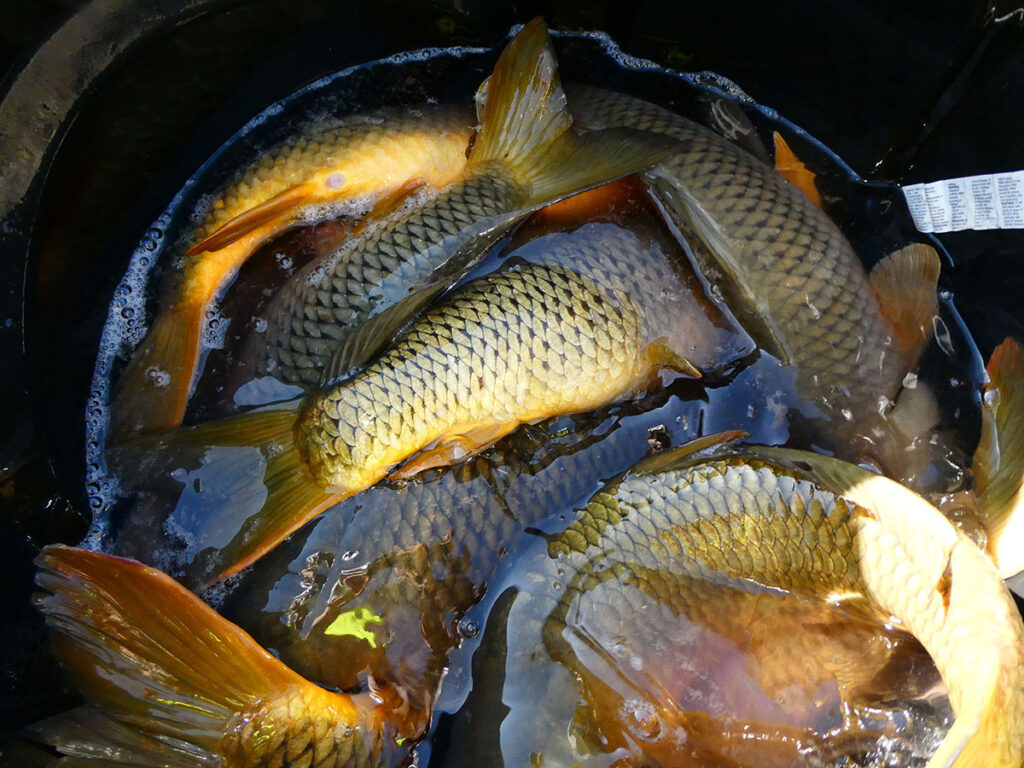
During the 2025 winter outage, Buckskin Tunnel, Cunningham Wash Siphon and Burnt Mountain Tunnel were all dewatered for inspection. Once water levels were low enough, crews began removing fish. Seines and dip nets were used to capture the fish, and they were placed into a custom-made mesh barrel that was lifted out of the canal with a crane. Once on the surface, fish were transferred to a fish hauling trailer and re-introduced to a downstream watered section of the canal.
There were 340 fish removed and relocated from the three work areas, including striped bass, grass carp, common carp, largemouth bass, channel catfish, flathead catfish and redear sunfish.
Another successful fish rescue!
